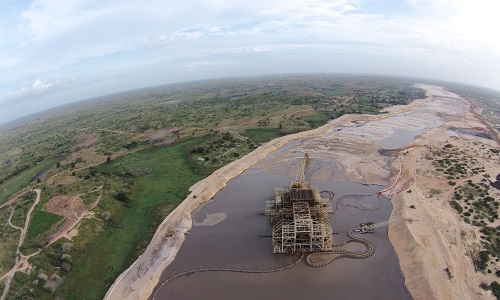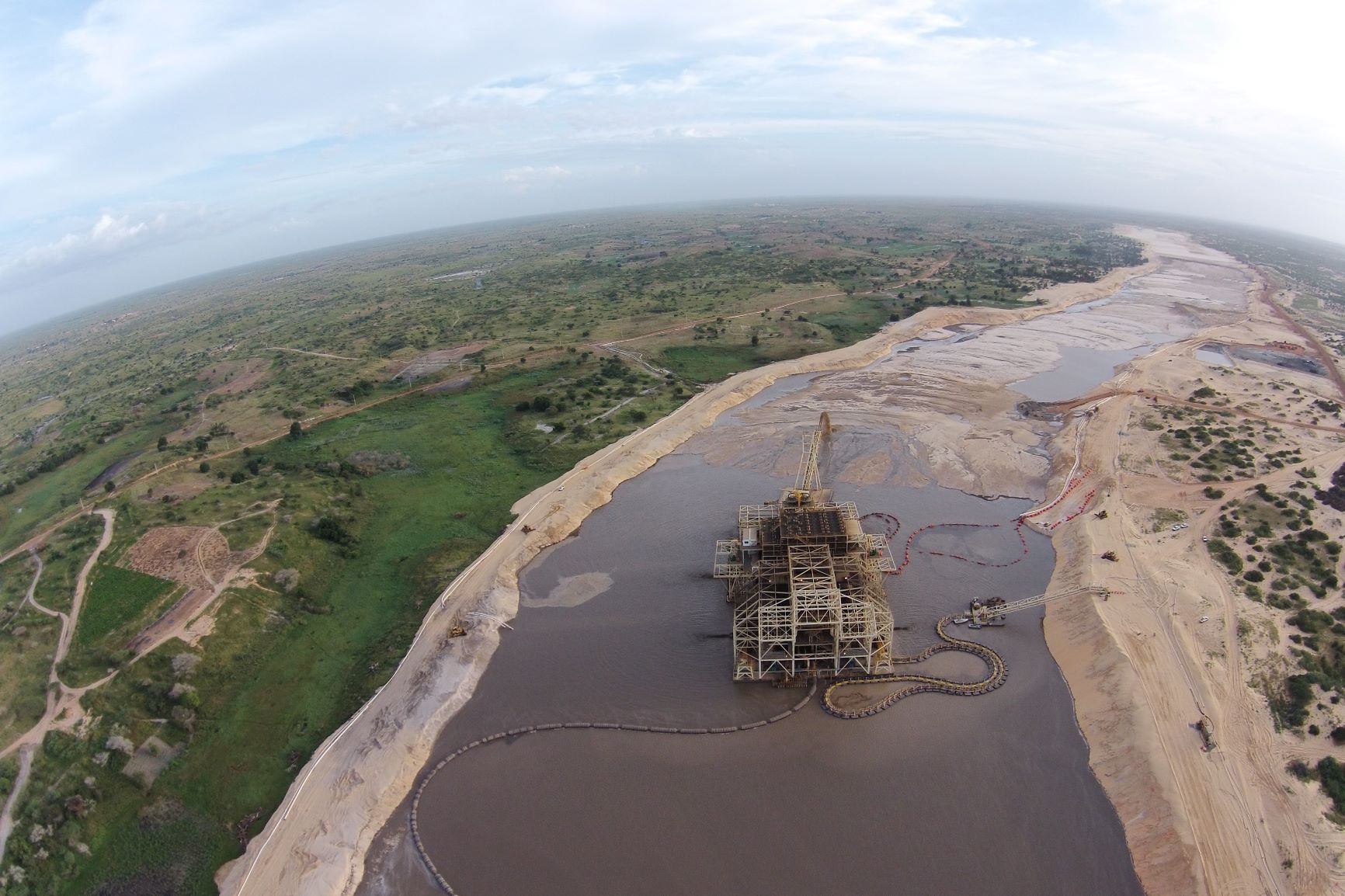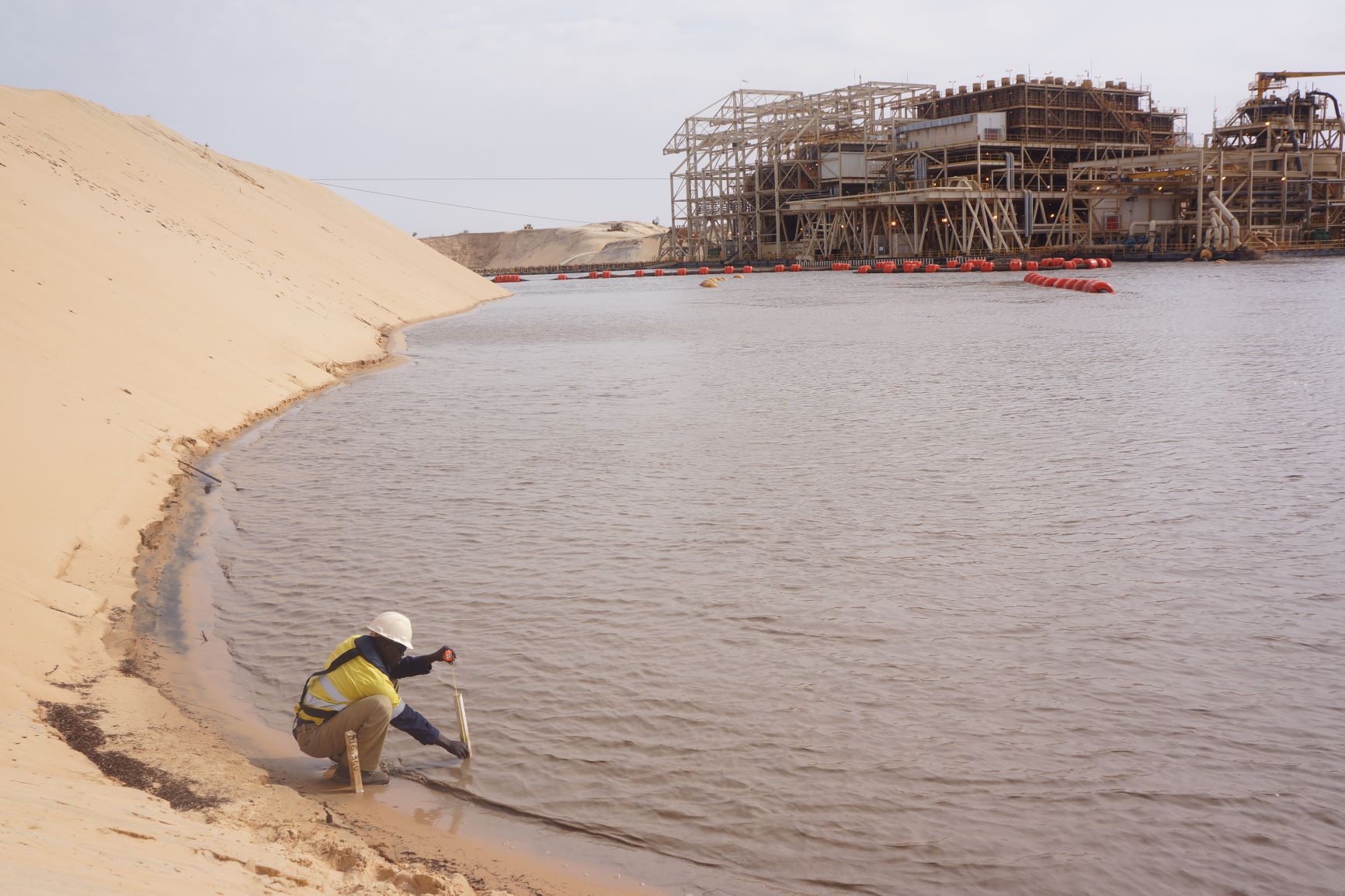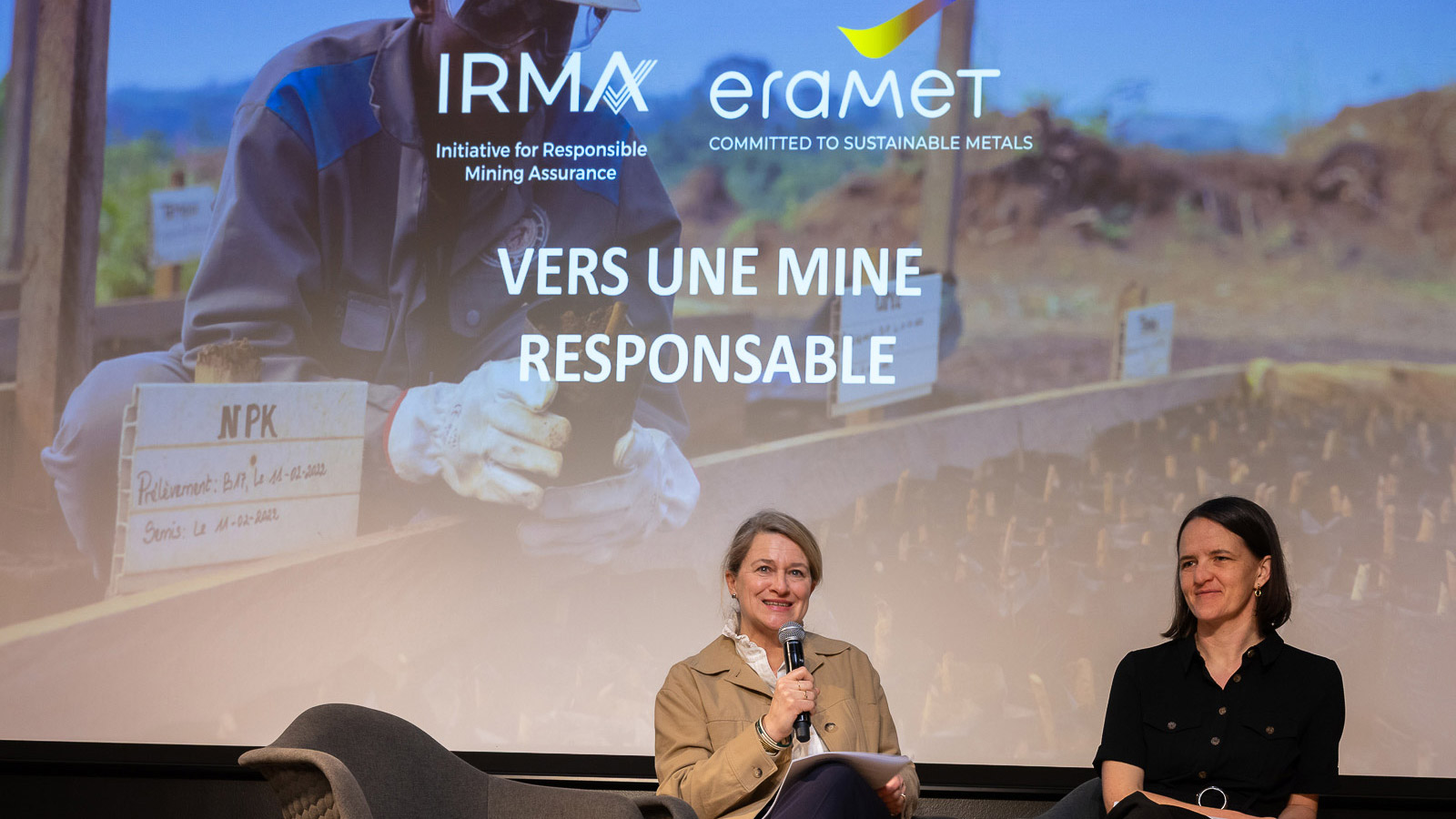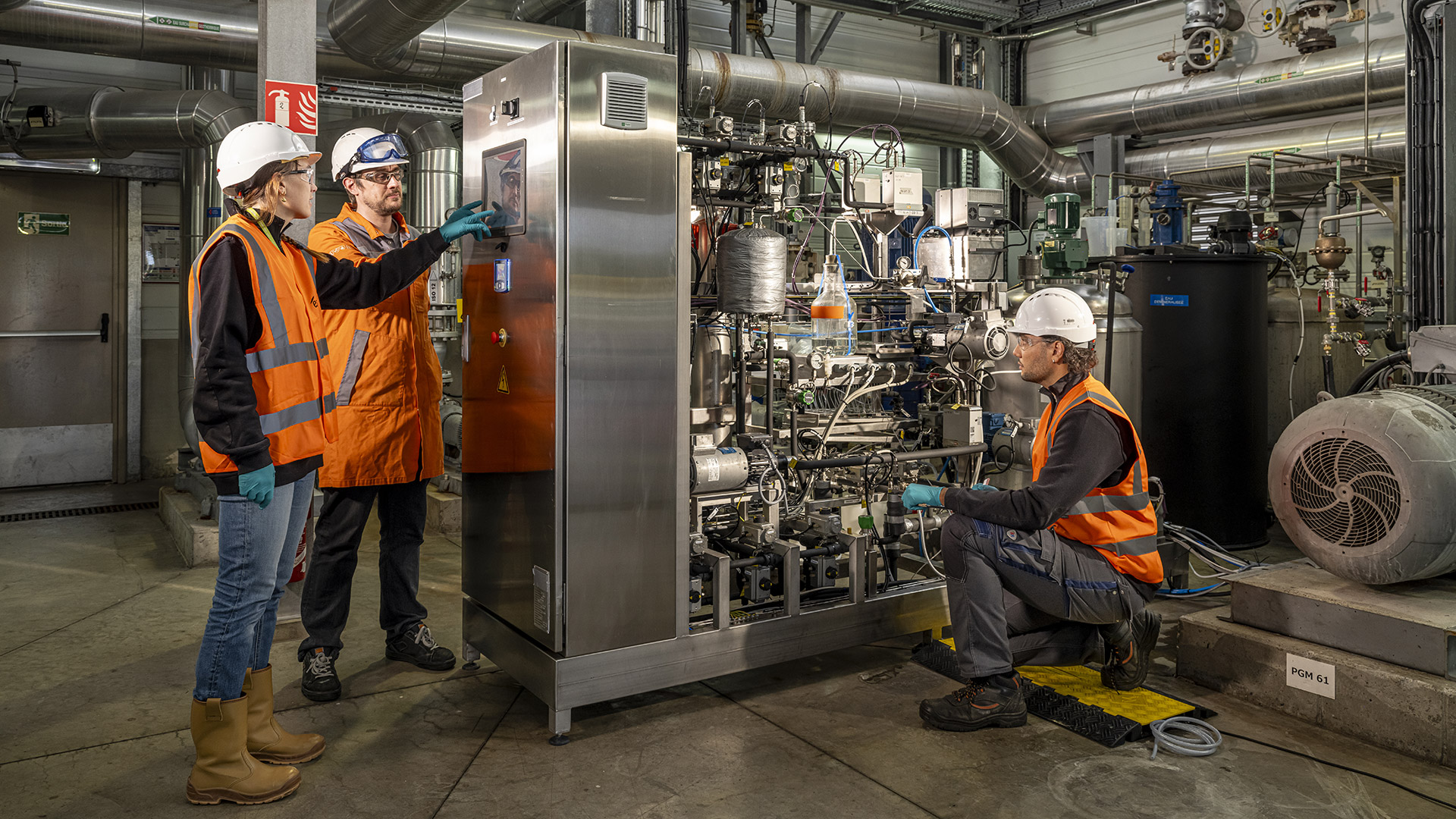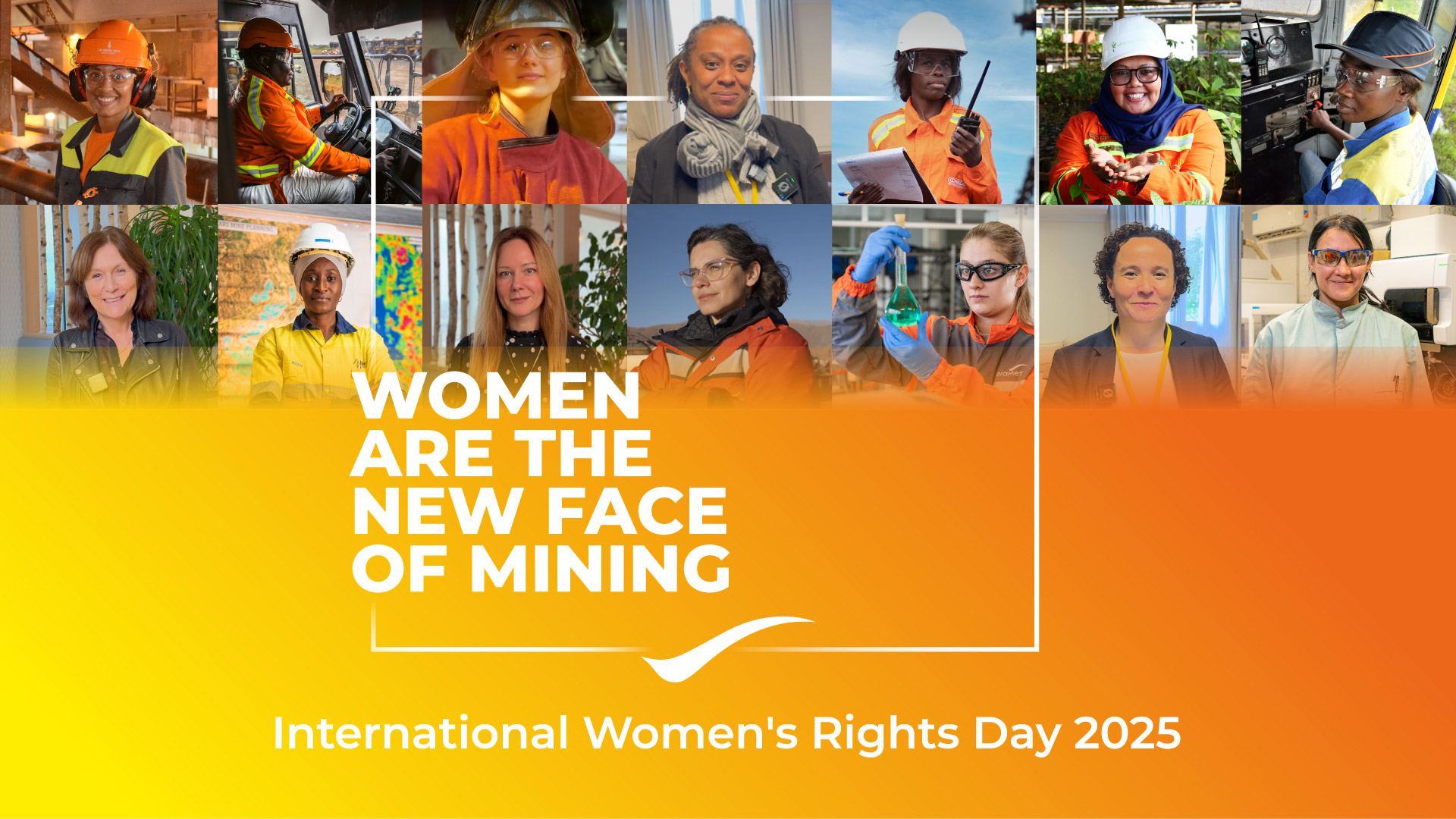GCO operates a mine on an artificial basin, whose limited water resources must be preserved for the needs of the neighboring communities. How? With the cutting-edge expertise of hydrogeology.
Somewhere along the Atlantic coast of Senegal, in the Niayes region north-east of Dakar, lies a vast expanse of sand, grassland, and market gardens. It is here, against this backdrop, that the world’s largest mining dredger roams in search of mineral sands.
Known as “Yeene”—from its name in Wolof—the dredger travels six kilometers a year around an artificial basin 600 meters long, 300 meters wide, and six meters deep. Operated by Grande Côte Opérations (GCO), this “mobile” mine sucks up substantial amounts of sand and water. The latter resource, however, is among the most precious, as it comes from two underground reservoirs that not only support the company’s mining activities, but also supply the neighboring communities, which use them for potable water, agriculture, and domestic needs.
That is why GCO strives to use only as much water as is strictly needed for its mining operations, pursuant to the pumping permits granted by the government, which owns the resources under the surface. The goal: to minimize and mitigate its impact on the environment and its host communities.
How does responsible water management work?
To understand how water is managed at GCO, you also need to understand how its mining operations work. First, the dredger sucks in water and raw sand, which it then sends to the floating plant, where the heavy minerals and leftover sand are separated. The non-mineral sand is pumped back toward the other end of the basin, where it partially seeps into the shallower of the two reservoirs—sometimes up to 1 kilometer downstream.
This is a critical moment: if nothing is done, the water level in the basin will automatically lower when the sand/water mixture is deposited in the dunes. Yet it is crucial for the water to remain at a constant level in order to keep the dredger stable and running smoothly. In addition, the water-saturated sand could end up flooding and destroying farm crops adjacent to the mine.
To keep from impacting the neighboring communities and disrupting its own operations, GCO relies on a team of hydrogeologists from the Mine Technical Services Department. “The mine is entirely dependent on maintaining the water level in the basin. As such, our goal is to supply the mine with what it needs, while respecting the concerns of our neighbors. Accordingly, we need to practice water management using different processes,” says Dr Mouhamat Seck, Head of the Mine Technical Services Department.
As part of this process, GCO “recycles” the water from the non-mineral sands via a series of surface-level pumps stationed along the mine, along with a number of small boreholes. The water recovered is then sent back to the mine to replenish the basin. In 2019, out of the 17 million cubic meters of water poured into the basin, 45% came from recycled water. Thanks to this system, water usage has fallen by almost half, and the maximum allowable quantities set by the government are largely observed.
Remaining water needs are supplied by pumps in the second reservoir deep underground.
The whole set-up is watched closely by an extensive monitoring system. Water levels in the deeper reservoir are monitored continually by 3 piezometers (tubes that tap into reservoirs to measure their water levels). Levels in the shallow reservoir are checked every day by GCO, and the data is analyzed and transmitted to the local authorities, who visit the site every month.
So what are the plans for the future? “Over the next five years, we’re going to move away from the area where we’re currently operating. As a result, we’ll be making new boreholes in new areas. What we need to do now is inform and reassure the local communities, so that we can continue holding the right to operate. We also need to continue managing water resources efficiently, to ensure there’s enough for everyone,” explains Dr Seck.
GCO intends to capitalize on its experience and its proven, cutting-edge expertise in water management—particularly since its methods stem from Eramet’s CSR roadmap, which provides strategies for using resources as responsibly as possible.


